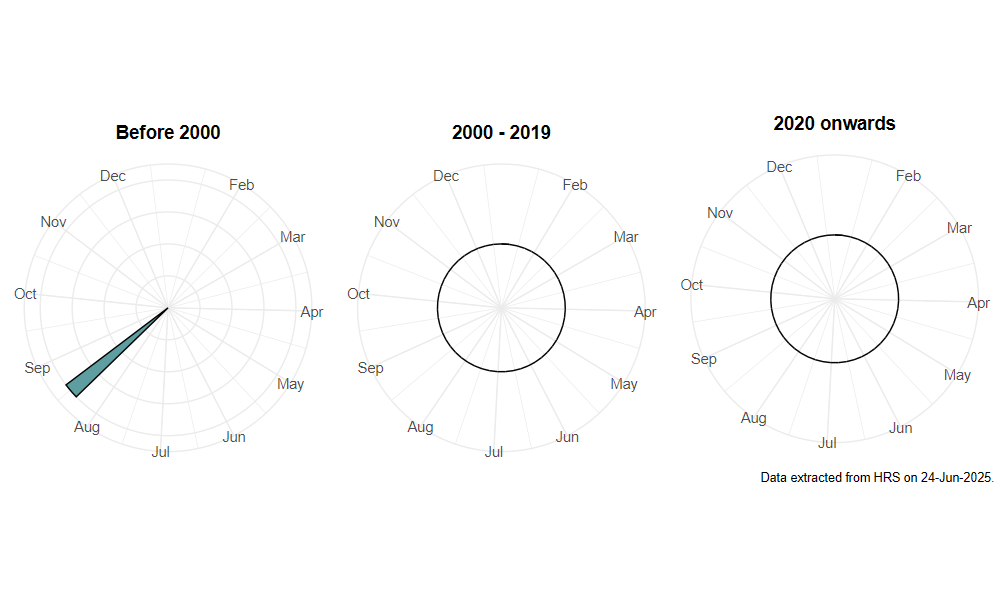Scaeva mecogramma (Bigot, 1860)
Identification
Identification difficulty = 5. ![]()
![]() according to Ball & Morris, 20241
according to Ball & Morris, 20241
Biology
The larva is reported to feed on the Psyllid Euphyllura olivana on Olive Olea europaea trees (Rojo et al., 1999)2. They are covered with the waxy secretions from the Psyllids in the wild and that this is also apparent on pupae which are to be found on twigs and on the ground beneath Olive trees.
Flight period
The following plots show the number of unique records per week excluding those reported to be of immature stages.

Status
Presumed to be an accidental import.
Distribution
According to Speight (2017)3, this is a species of Quercus ilex/Q. suber forest, olive groves and citrus orchards but can be migratory with occasional specimens occurring far outside the breeding range. A single British record: a female found on 19/08/1905 in Arniston, near Dalkeith, Edinburdg.

-
Ball, S., & Morris, R. (2024). Hoverflies of Britain and Ireland. WILDGuides (3rd ed.). Oxford: Princeton University Press. ↩
-
Rojo, S., Pérez-Bañón, C., & Marcos-García, M. (1999). First observations on the biology of Scaeva mecogramma (Bigot, 1860) (Diptera, Syrphidae) and notes on some other syrphids preying on psyllids (Hemiptera, Aphalaridae and Triozidae). Volucella, 4, 105–111. ↩
-
Speight, M. (2017). Species accounts of European Syrphidae ( No. 97). yrph the Net, the database of European Syrphidae (Diptera) (p. 294). Dublin: Syrph the Net publications. Retrieved from https://pollinators.ie/wordpress/wp-content/uploads/2018/05/StN-2017-Species-Accounts.pdf ↩